Push-to-Talk, Picture, and Video
Send and receive crystal-clear voice messages, images, and videos with just the push of a button.
MEET WALT® SMART RADIO
Walt is an AI-enhanced smart radio system built for industrial and business environments. It replaces traditional two-way radios with a digital, enterprise-grade platform that improves frontline communication, safety, and shift continuity. Walt combines push-to-talk, transcription, translation, and AI-driven insights with rugged, Class 1 Div 2 durability—giving construction, manufacturing, logistics, and other high-noise worksites a smarter way to connect and manage operations.
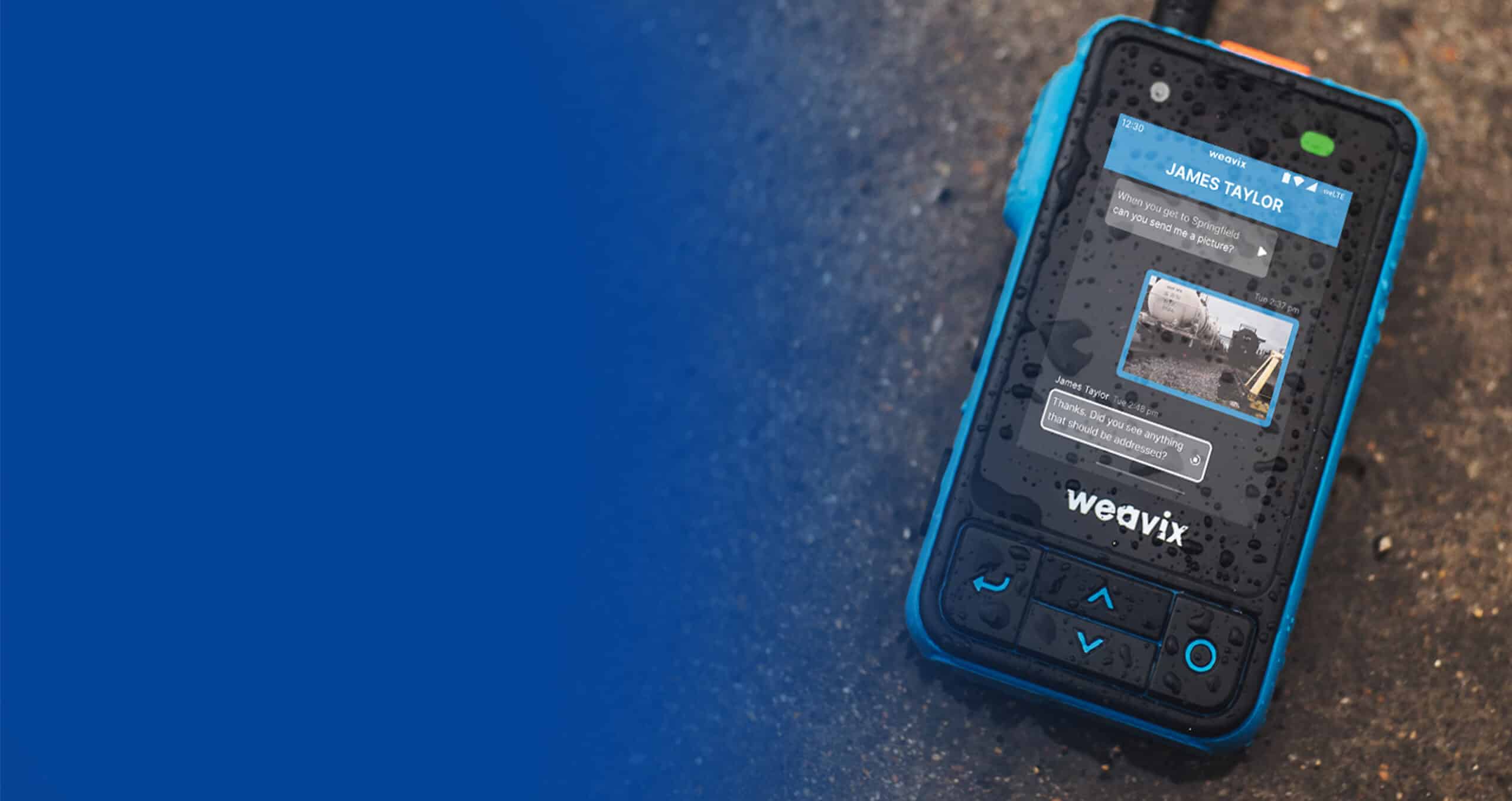

Designed with a rugged, modular build and a Class 1 Div. 2 safety rating, Walt business radio system outperform and outsmart legacy radios in design, functionality, and durability. Walt commercial smart radio seamlessly adapts to your current network and provides advanced collaboration tools for every worker. Designed by the frontline, for the frontline, Walt thrives in the most demanding industrial settings and is the perfect solution for any team, at any site. Walt thrives in the most demanding industrial settings and is the perfect solution for any team, at any site.
> Compare Walt industrial digital radio to legacy two-way radios and smart phones.


The perfect Smart Radio System for the modern frontline worker.
Before choosing a radio for communication with your frontline workers, explore Walt’s best-in-class capabilities.
Walt Smart Radio delivers enterprise-grade safety, digital collaboration, LTE/Wi-Fi coverage, and rugged Class 1 Div 2 durability. Built for industrial, construction, logistics, and manufacturing teams, Walt outperforms traditional two-way radios, smart radios, and commercial push-to-talk devices with transcription, translation, compliance logs, and scalable management. >>Learn more about weavix in manufacturing.
Limited to radio frequency range; dead zones common indoors. Requires repeaters to extend range.
Nationwide coverage anywhere cellular or Wi-Fi is available, with FRS backup for off-network use and SimulCast across facilities.
“Emergency” button only triggers a loud alert tone; no worker ID, context, or location.
SOS with ID & location, lone-worker protection, and incident logging for full visibility.
Voice-only push-to-talk; limited to 1–2 channels (e.g. Motorola R1). No private conversations.
Group talk or private 1:1 messaging, plus broadcast and multimedia (photo, video, text).
Requires an FCC license per channel, adding cost and delays.
No FCC license required; works instantly on LTE/Wi-Fi.
Expansion needs costly repeaters ($1k–$5k each, plus licensing/installation). Separate systems per site.
Enterprise-wide scalability — no repeaters needed. One platform covers multiple sites.
Durable but inconsistent. Many lack intrinsic safety (C1D2). Limited dust/water resistance (often IP54).
Intrinsically safe (C1D2), drop-resistant, dustproof, water-resistant, with a hardened touchscreen built for industrial use.
This comparison shows why Walt smart radios are more than a two-way radio — and even more than a smart radio. It’s a complete frontline communications platform designed to keep your workforce connected, safe, and productive.
For a deeper look, see the full Walt Smartt two-way radio vs. smartphones vs. two-way radios comparison.
Workers Radio Enable Seamless Access with Tap & Go Authentication
Walt simplifies sign-ins with options like phone numbers, email, QR scanning, or secure NFC cards. Tap-and-go authentication ensures quick, seamless shift changes for maximum efficiency.
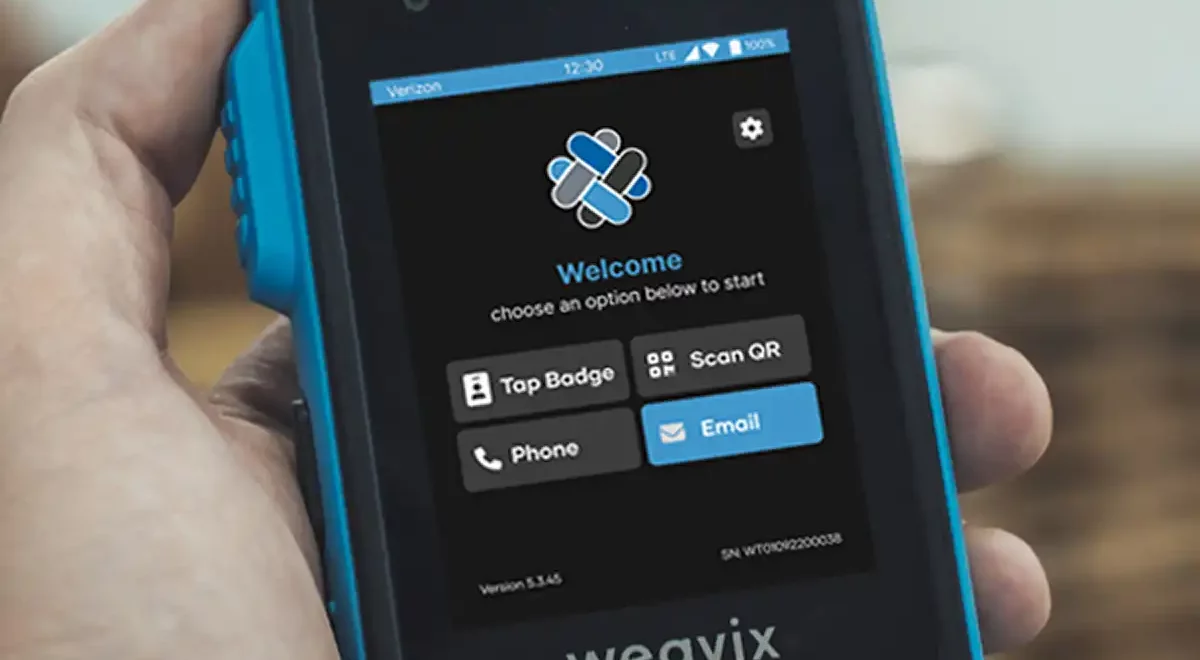
Ensure Every Walt Smart Radio Is Always Ready For Action
Charge from one to hundreds of Walt Smart Radios simultaneously with versatile charging solutions. Stack, rack, or mount cradles for easy organization. Dock to log out instantly and enjoy rapid charging via the Wrangler™, Power Wall, or USB-C.
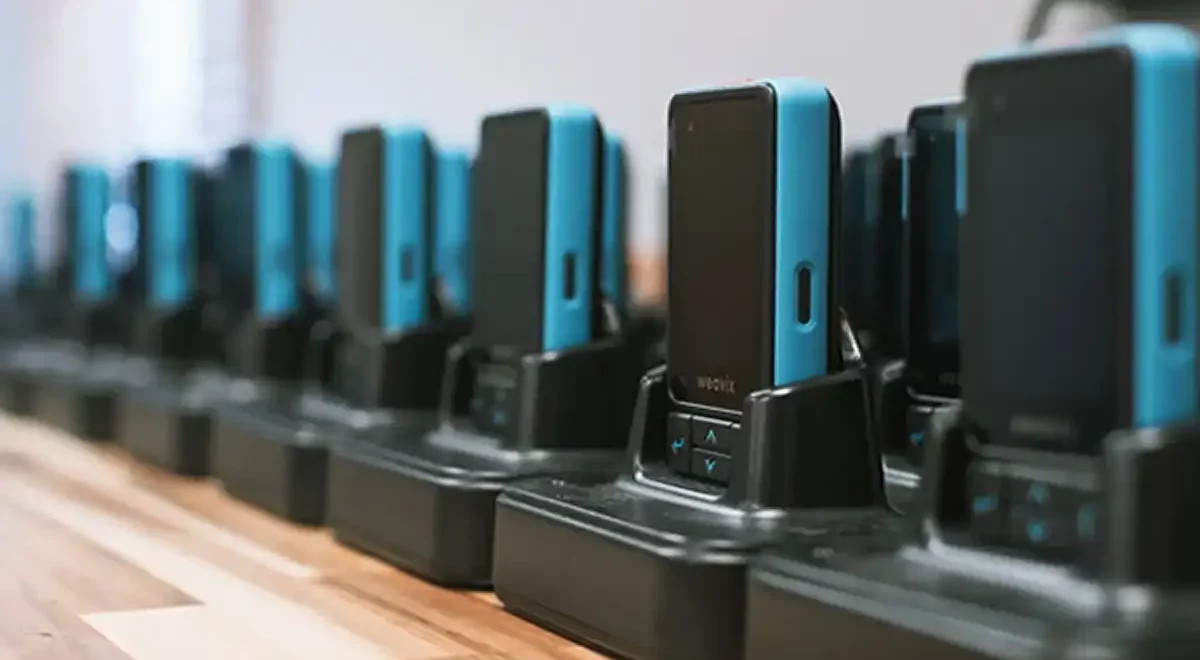
Utilize an External Speaker or Headset Options For Seamless Communication
As a smart work radio, Walt features a powerful external speaker for loud settings. We offer a variety of headset options, ensuring your frontline team has the right tools to excel in any environment.
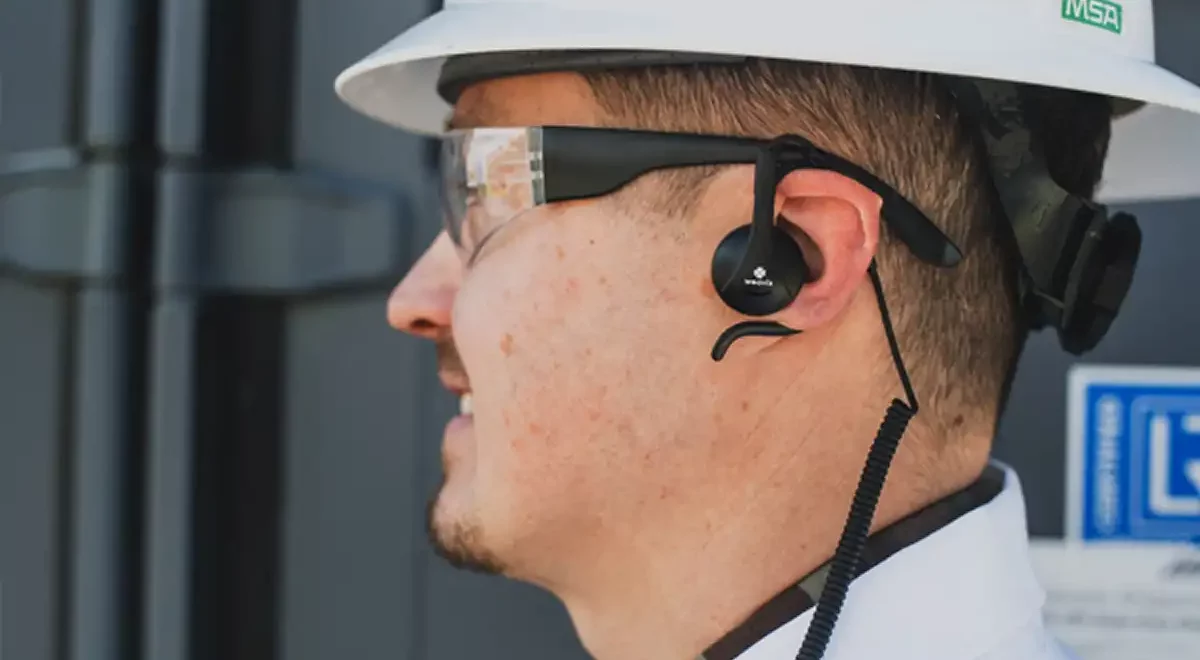

The best radio to communicate with your team is the one that enables effortless collaboration across facilities — and beyond.

Collaborate seamlessly from anywhere with a network connection using the Walt mobile app, compatible with any Android or iOS smartphone.
More than an industrial walkie-talkie system, Walt bridges the gap to the frontline. Communicate directly with your workforce, regardless of geographic distances.
Walt combines a purpose-built smart radio with software that routes messages by role or line, confirms acknowledgments, and escalates issues. PT3 (push-to-voice/picture/video) adds clarity, while transcription/archiving can enable traceability. Compared with open LMR chatter, supervisors get verifiable updates, crews get less noise, and incidents move faster from report to resolution.
Operations, maintenance, and safety teams in loud, distributed environments—manufacturing, construction, aviation, logistics, and more. It supports 1:1 and group channels mapped to lines, areas, or shifts, so information goes to the people who can act now.
Many plants start by complementing current setups on a pilot line, then expand as crews experience cleaner routing and fewer misses. Governance and channel templates make phased adoption straightforward.
Mirror your org, create channels (by role/line/area), and train on alerts, acknowledgments, and escalation. Supervisors practice routing and PT3; crews learn quick acks and evidence capture. Rollout typically follows a short pilot.
Admins control who can broadcast or listen, who must acknowledge, and when to escalate. Temporary access covers contractors or outage teams while preserving oversight.
Yes. Supervisors and office staff coordinate from the console while frontline teams use Walt and the app, reducing walk-and-wait between floor and office.
Missed messages, slow escalations, and unclear ownership. Role-based routing and acknowledgments shorten response times; PT3 removes ambiguity; optional transcripts support reviews and training. Plants see cleaner changeovers and fewer rework loops.
Many teams feel the difference in the pilot: faster answers to “Who’s on it?”, fewer status checks, and smoother handoffs. Expansion simply repeats the winning channel template.
They broadcast to defined roles, verify acknowledgments, review handoff notes, and escalate time-boxed tasks. They keep multiple lines moving without constant walk-arounds.
They broadcast to defined roles, verify acknowledgments, review handoff notes, and escalate time-boxed tasks. They keep multiple lines moving without constant walk-arounds.
Workers receive targeted tasks, reply with quick acks, and attach PT3 evidence when needed. That ends long walks for clarification and prevents repeated instructions.
Directed, time-stamped alerts organize responders; acknowledgments confirm reach under noise. When enabled, transcription/archiving preserves critical communication for incident reviews or audits under your policies.
Yes. Every channel on a traditional two-way radio usually needs its own FCC license, which adds cost and slows deployment. Walt Smart Radio works over LTE and Wi-Fi, so no FCC license is required.
Often, yes. Two-way radios rely on costly repeaters to expand coverage across large facilities. Walt Smart Radio provides enterprise-wide scalability without repeaters by using LTE/Wi-Fi.
On most radios, an emergency button just sounds an alert tone. Walt Smart Radio sends an SOS with worker ID, location, and context, giving supervisors the full visibility needed to respond quickly.
Yes. Walt is intrinsically safe (C1D2), drop-resistant, dustproof, water-resistant, and built with a hardened touchscreen for the frontline. Many traditional radios lack these protections.
Consumer-focused devices and apps like Relay or smartphones aren’t built for industrial use. They lack intrinsic safety, rugged design, and built-in SOS. Walt Smart Radio combines enterprise-wide coverage, safety, and frontline data in a single dedicated platform.
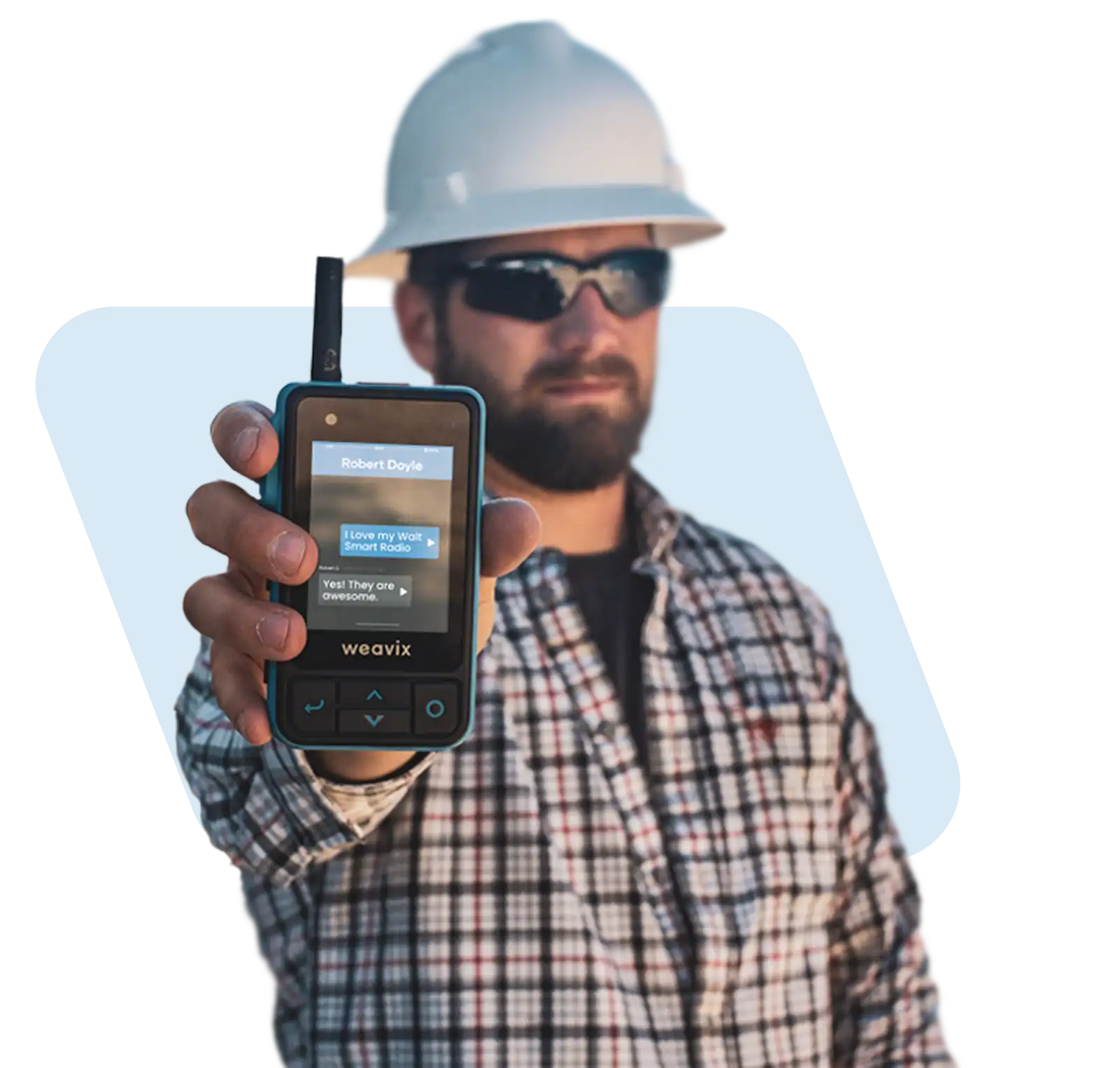
The Walt Smart Radio System unlocks the full potential of your frontline teams. As the industry’s most simple, safe, and smart radio, Walt brings cutting-edge innovation to the frontline, creating opportunities to upskill your workforce and boost productivity. More than just connecting workers, Walt redefines how radios empower your enterprise, transforming communication into a strategic advantage. >> Learn what’s sinking your operations.